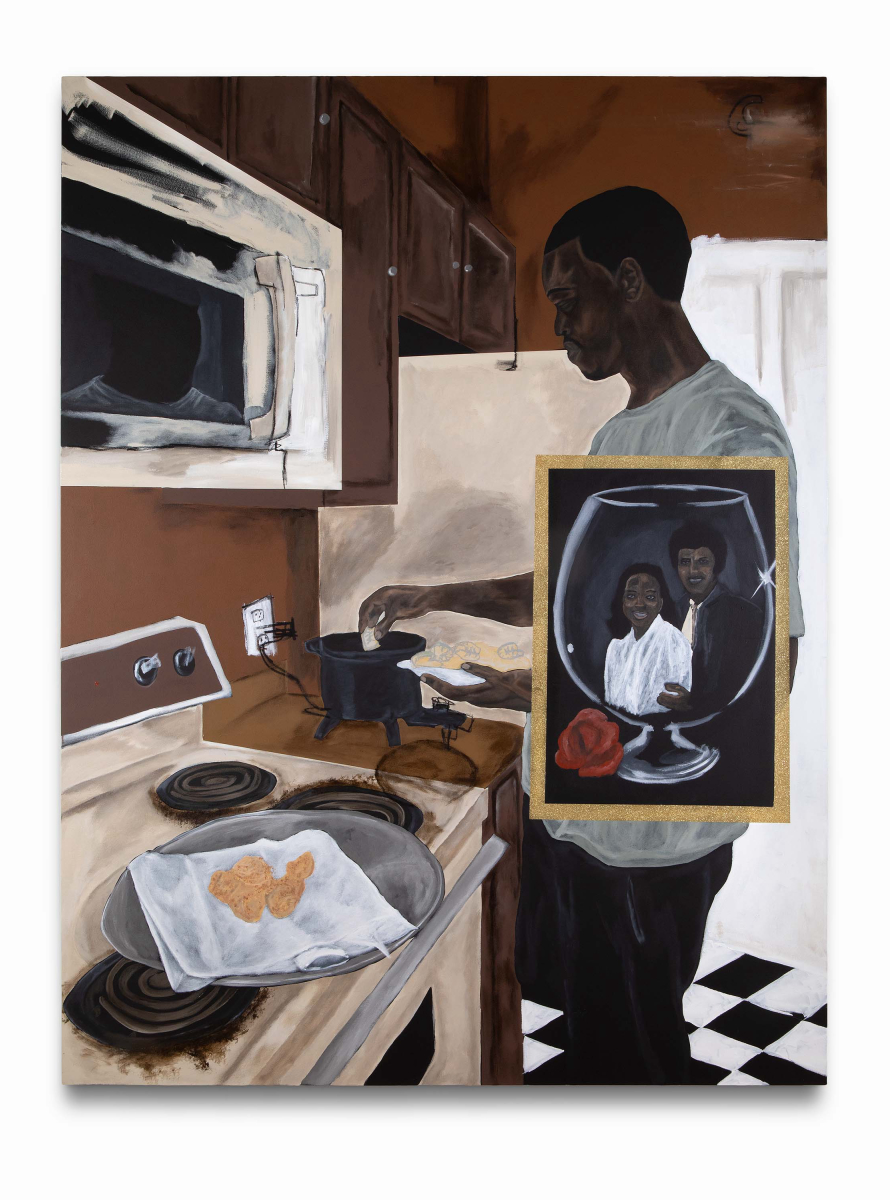Jammie Holmes Unveils the Rural Black South to the World
Artist Jammie Holmes contradicts polite society's debasement of growing up in the middle of "nothing" and "nothing" —turning into slurs that harshly depict rural suburbs village of the United States. The former oil rig worker has captivated art collectors and museums with his large figurative paintings of growing up, living and working in Thibodaux, Louisiana (population: 14,567). And in contrast to the sea of Yale MFAs flooding the art market, if he hadn't grown up in the void surrounded by nothing, he assumed he wouldn't have had anything to paint. “Everything that I draw comes from experience, from something that I feel, and I feel strongly about a lot of different things. I had 30 years of buildup that I wanted to get out of my chest,” he said.
At the age of 32, Holmes walked into his first art museum to see a KAWS exhibit, where he said, “I just thought to myself, 'I can do this'” – a concept that he passed on to KAWS after they crossed the street (Kaws laughs). ) Ironically, Holmes did not necessarily leave the premises.
painting of man in the kitchen
After his first visit, Holmes increased his museum attendance, eventually noticing the apparent absence of art representations for nothing. So he decided to give up his job, rekindle his childhood fascination with painting, follow the path of no art and take on an overlooked visual culture of 3.68 million rural black Americans on the main stage. Now, just 5 years later, he is a lover of the art world preparing for his first international show in Korea and celebrating his recent representation at the Rights Gallery. Marianne Boesky in New York City and of the Library Street Collective in Detroit.
Despite one or two perforated canvases, Holmes' self-education helped him create anti-violation work in a market dominated by figurative language. And, with no historical model to recreate, Holmes' work has attracted aesthetic stylists such as Lenny Kravitz, who seek out authentic artists who deliver original work.
However, the art world loves comparisons; just don't expect Holmes to dig into it with you. He will flash a cold smile and a slight nod, but such conversation is not his vibe. He laughed, “How am I supposed to be an artist if I'm looking for other artists? That is not my job. It is for collectors. That's for galleries. That's what museum curators really know. As for artists, it's not my job to know them. I learned them when I was gone. However, he does give a special thanks for his recent fascination with Caravaggio.
Related post kaws rug
His latest show, “What Happened to the Soul Food”, is curated by Matt Black and opened on January 27 at Gana Art Gallery in Korea, marking continuous self-improvement. Holmes's works with massive displays like Glass House (2021) and Soul Food (2021), leaving space for the Korean public to "leave into the experience", he explains. While he realizes that his international audience may not be familiar with Thibodaux's scenes, he hopes "they can look over [his subject's] shoulder," taking in the scenes. scene and pour yourself “a cup full of anything”.

Comments
Post a Comment